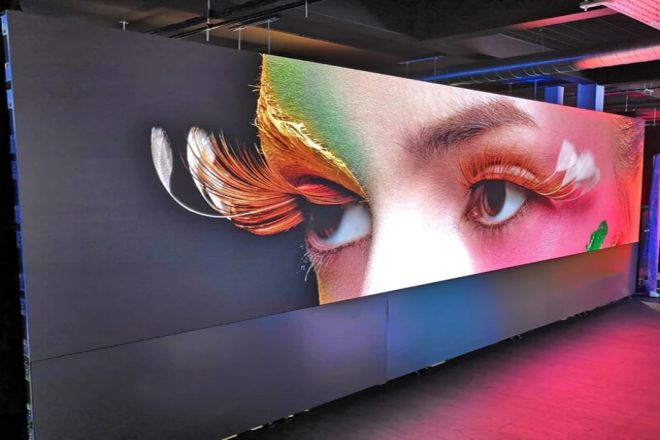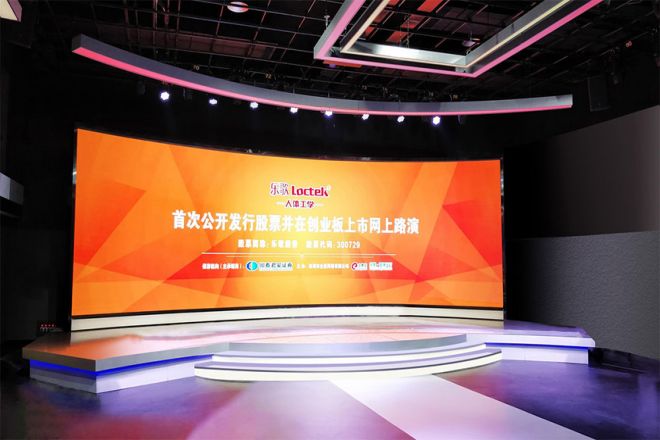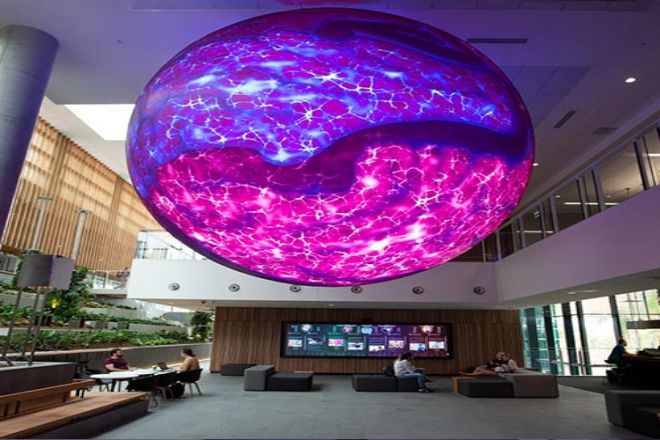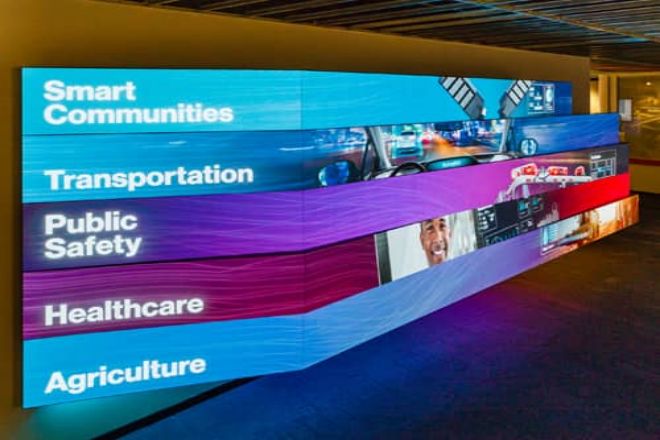序章

With the rapid development of science and technology and the advent of the digital age, LED表示画面, as an efficient, energy-saving, and environmentally friendly display device, have been widely used in advertising media, stage performances, sports events, conferences and exhibitions, and other fields.
However, with the intensification of market competition, how LED display screen companies can reasonably control costs and increase profits while ensuring product quality has become the focus of industry attention.
1. Cost analysis of LED display screens

1). Material cost
- LED chip:
The LED chip is the core component of LED display screens, and its cost is affected by factors such as chip type, size, and brightness. With the advancement of technology, the cost of LED chips has been reduced by improving light efficiency, but it is still an important part of the overall cost.
- PCB substrate:
The cost of PCB substrate is mainly composed of material cost, processing cost, and labor cost. Among them, material cost includes substrate material, circuit board material, and copper foil, and processing cost includes drilling, copper plating, graphic etching, and other process costs.
- Packaging materials:
Packaging materials such as packaging substrates, wires, chip bases, etc., are necessary components in the packaging process of LED display screens, and their cost usually accounts for one-third to one-half of the total packaging cost.
- Driver IC and power supply:
Driver IC and power supply are key components that ensure the normal operation of LED display screens. Their costs are affected by factors such as circuit design, power size, and brand.
- Auxiliary materials such as frames and heat sinks:
Although these auxiliary materials account for a small proportion, they are also part of the overall cost of LED display screens. In particular, the choice of frame materials has a certain impact on the cost.
2). Production cost
- Depreciation of manufacturing equipment:
The equipment required to produce LED display screens, such as SMT placement machines, reflow soldering machines, etc., will depreciate as the use time increases, which is also part of the production cost.
- Labor cost:
Labor costs include wages, benefits, and insurance premiums for workers directly involved in production, as well as wages for managers and equipment maintenance engineers who are indirectly involved.
- エネルギー消費:
The production process of LED display screens consumes resources such as electricity, which is also part of the production cost.
- Quality control and testing costs:
In order to ensure the quality of LED display screens, a series of quality controls and tests are required, which will incur corresponding costs.
3). R&D and design costs
- R&D team salary:
The R&D team is the key force in the design and innovation of LED display screens, and its salary is an important part of the R&D cost.
- Patent fees:
Patent fees that may be involved in the R&D process, including application fees, maintenance fees, etc.
- Design software and tool costs:
design software and simulation tools used for R&D.
4) Marketing and sales costs
- Market research costs:
In order to understand market demand and competitive situation, enterprises need to conduct market research, which will incur corresponding costs.
- Advertising and promotion costs:
In order to increase product awareness and market share through advertising and promotion activities, these activities require a certain amount of investment.
- Sales staff salary and commission:
Sales staff salary and performance commission are important components of marketing and sales costs.
- Channel construction and maintenance costs:
Building and maintaining sales channels requires human, Material, and financial resources.
5). Logistics and transportation costs
- Transportation costs:
The costs incurred in transporting LED displays from the place of production to the place of sale or the hands of customers.
- Warehousing costs:
Costs incurred during storage, including warehouse rent, equipment depreciation, management costs, etc.
- Cargo insurance costs:
In order to ensure the safety of goods during transportation, it may be necessary to purchase cargo insurance.
2. LED display cost calculation method
1). Direct cost calculation
- Material cost summary
First, it is necessary to list all the materials used to produce LED display screens, including LED chips, PCB substrates, packaging materials, driver ICs, and auxiliary materials such as power supplies, frames, heat sinks, etc.
According to the actual purchase price, the cost of each Material is summarized to obtain the total material cost.
- Production cost allocation
Production costs mainly include depreciation of manufacturing equipment, labor costs, energy consumption, and quality control and testing costs.
Equipment depreciation can be allocated according to the purchase price and service life of the equipment.
Labor costs are calculated based on the number of workers involved in production, working hours, and wage levels.
Energy consumption is usually calculated based on the actual electricity consumption and electricity prices during the production process.
Quality control and testing costs are estimated based on the number of tests, equipment, and personnel costs.
2). Indirect cost calculation
- R&D and design cost allocation
R&D and design costs include R&D team salaries, patent fees, design software, and tool fees, etc.
These costs can be allocated based on the project’s R&D cycle, number of participants, and R&D progress.
- Marketing and sales cost allocation
Marketing and sales costs include market research costs, advertising and promotion costs, sales staff salaries and commissions, channel construction and maintenance costs, etc.
These costs can be allocated based on sales, market share, or sales cycle.
Logistics and transportation cost allocation
Logistics and transportation costs include transportation costs, warehousing costs, and cargo insurance costs.
These costs can be allocated based on transportation distance, transportation volume, storage area, and cargo value.
3). Total cost calculation
Add up the direct costs and indirect costs to get the total cost of the LED display.
The specific calculation formula is Total cost = Material cost + Production cost + R&D and design cost + Marketing and sales cost + Logistics and transportation cost.
During the calculation process, it is necessary to pay attention to the accuracy and rationality of each cost and make appropriate adjustments according to the actual situation. In addition, enterprises can also formulate corresponding cost control strategies based on the results of cost analysis to improve production efficiency and reduce costs.
3. LED display pricing strategy

1). Cost-plus pricing method
- Determine the cost-plus rate.
The cost-plus rate is the proportion that the enterprise adds to the product cost in order to obtain the target profit. This ratio is usually determined by factors such as the company’s profit target, market conditions, and industry competition.
For example, if the company sets a cost markup of 20%, the selling price of the product is 1.2 times the cost.
- Calculate product selling price
Selling price = cost × (1 + cost markup)
Assuming that the total cost of the LED display is 10,000 yuan and the cost markup is 20%, the selling price = 10,000 × (1 + 20%) = 12,000 yuan.
2). Competition-oriented pricing method
- Analyze competitor prices
Enterprises need to pay close attention to the prices of similar products on the market, especially the pricing strategies of competitors.
Through market research, competitor analysis reports and other means, understand the pricing level, price adjustment frequency, and price elasticity of competitors.
- Set competitive prices
Set competitive prices based on the price level of competitors and the characteristics of their products.
If the company’s products have obvious advantages, they can set slightly higher prices; if the product differences are not large, they need to seize market share through price competition.
3). Value-oriented pricing method
- Determine product value
Enterprises need to have a deep understanding of the needs and expectations of target customers and determine which value needs the product can meet.
These value demands may include product quality, performance, brand, service, and other aspects.
- Set price based on value
Set the corresponding price according to the value provided by the product.
If the product can provide higher value to customers, the company can set a higher price; conversely, if the product value is relatively low, it is necessary to attract customers by lowering the price.
4. LED display profit analysis
1). Profit calculation
The basic formula for calculating the profit of LED display is:
Profit = Sales revenue – Total cost
Among them, sales revenue refers to the total revenue obtained by the company when selling LED display products, and the total cost includes direct cost and indirect cost, as mentioned above.
2). Profit margin calculation
Profit margin is a key indicator to measure the profitability of an enterprise. Its calculation formula is:
Profit margin = (profit/sales revenue) × 100%
The higher the profit margin, the stronger the profitability of the enterprise.
3). Analysis of profit influencing factors
3.1). Market supply and demand relationship
Market demand: When market demand is strong, enterprises can increase profits by raising prices or increasing sales. On the contrary, when market demand is insufficient, enterprises may face the risk of price cuts or sales declines, which will affect profits.
Supply capacity: The supply capacity of an enterprise, including production scale, technical level, product quality, etc., will affect its market competitiveness. Enterprises with strong supply capacity are often able to obtain higher market share and profits.
3.2). Cost control ability
Material cost: The material cost of LED display screens accounts for a large proportion, so reducing material cost is the key to increasing profits. Enterprises can reduce material costs by optimizing procurement channels and improving material utilization.
Production cost: By improving production efficiency and reducing energy consumption and labor costs, enterprises can reduce production costs and thus increase profits.
R&D and design costs: By improving R&D efficiency and reducing patent fees and design software costs, enterprises can reduce R&D and design costs and thus increase profits.
3.3.). Product competitiveness
Product quality: High-quality products can improve customer satisfaction and loyalty, thereby increasing sales and profits.
Technological innovation: Through technological innovation, enterprises can launch competitive new products or improve the performance of existing products, thereby obtaining higher market share and profits.
3.4). Marketing strategy
Market positioning: Accurate market positioning helps enterprises better meet the needs of target customers and increase sales and profits.
Sales channels: Establishing diversified sales channels, such as online platforms, agents, distributors, etc., can expand market coverage and increase sales and profits.
Promotional activities: By holding promotional activities, such as discounts and gifts, more potential customers can be attracted, and sales and profits can be increased.
In summary, market supply and demand, cost control ability, product competitiveness, and marketing strategy are the main factors affecting the profits of LED display screens. Enterprises need to formulate reasonable strategies according to actual conditions to increase profit levels.
5. Strategies to increase the profits of LED display screens

1). Optimize supply chain management
- Reduce procurement costs
Establish long-term cooperative relationships with suppliers and strive for more favorable procurement prices.
Regularly evaluate supplier performance to ensure stable raw material quality and reduce defective product rates.
Introduce market competition mechanisms; multiple suppliers compete for quotations and select the most cost-effective supplier.
- Improve production efficiency
Introduce advanced production equipment and processes, improve automation levels, and reduce labor costs.
Optimize production processes and reduce waste and loss.
Strengthen employee training and skills improvement to improve employee work efficiency and quality awareness.
- Reduce inventory backlog
Establish a scientific inventory management system and set inventory levels reasonably according to market demand and sales forecasts.
Introduce lean production concepts, implement just-in-time (JIT) production, and reduce inventory backlogs and capital occupation.
Strengthen the informatization of inventory management to achieve real-time updating and monitoring of inventory data.
2). Improve product competitiveness
- R&D innovative technology
Increase R&D investment, pay attention to cutting-edge technologies in the industry, and continuously launch competitive new products.
Establish industry-university-research cooperation with universities, scientific research institutions, etc., and jointly develop new technologies and new products.
Actively participate in industry standard formulation and technical exchanges to enhance the company’s technological status and influence.
- Improve product design
According to market demand and customer feedback, continuously optimize product design and improve product practicality and aesthetics.
Introduce humanized design concepts to enhance user experience and satisfaction.
Strengthen intellectual property protection to ensure the uniqueness and competitive advantage of products.
- Improve product quality
Establish a strict quality management system to ensure that every link of the product, from raw material procurement to the production process, meets quality requirements.
Strengthen quality inspection and monitoring to ensure that products undergo strict quality inspection before leaving the factory.
Provide high-quality after-sales service, solve problems encountered by customers during use, and improve customer satisfaction and loyalty.
3). Expand sales channels
- Develop new customers
Through market research and Analysis, identify potential new customer groups and develop targeted marketing strategies.
Strengthen communication and contact with customers, understand customer needs and expectations, and provide personalized solutions.
Hold product launches, exhibitions, and other activities to showcase product features and advantages and attract new customers.
- Expand international markets
Pay attention to international market needs and trends, and adjust product strategies to meet the needs of the international market.
Actively participate in international exhibitions and trade activities to expand brand awareness and influence.
Establish overseas sales networks and channels to expand overseas market share.
- Diversify sales channels
In addition to traditional offline sales channels, actively explore online sales channels such as e-commerce platforms and social media.
Establish cooperative relationships with agents, distributors, etc., to expand sales networks and coverage.
Try cross-border cooperation and joint marketing to expand new sales channels and customer resources.
4). Implement differentiated marketing strategies
- Develop marketing strategies for different customer groups
Develop differentiated marketing strategies and product positioning based on the needs and characteristics of different customer groups.
Launch different product and service combinations for different customer groups to meet the personalized needs of customers.
Strengthen interaction and communication with customers to establish solid customer relationships and loyalty.
- Provide customized services
Provide customized product and service solutions according to the specific needs of customers.
Strengthen pre-sales consultation and after-sales service support to ensure customer satisfaction and trust during use.
- Strengthen brand image-building
Strengthen brand publicity and promotion efforts to enhance brand awareness and reputation.
Establish a unified brand image and visual identification system to enhance brand recognition and memorability.
Actively participate in social welfare and charity activities to enhance the brand’s social responsibility and credibility.
結論
Through an in-depth discussion of the cost and profit calculation of LED display screens, we can clearly see that cost control and profit increase are the keys to enterprises gaining advantages in market competition. Only by continuously optimizing the cost structure, improving production efficiency, strengthening R&D innovation, and expanding sales channels can we be invincible in the fierce market competition.
最後に、LEDディスプレイスクリーンについてさらに詳しく知りたい場合は、 ご連絡ください。
